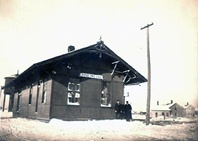
Our History
When it comes to progress in high-performance homebuilding, the latest technologies — like net zero homes, decarbonization strategies, and advanced materials — often take center stage. But these innovations were built on a foundation of collaboration, learning, and long-term effort. For more than 40 years, the Energy & Environmental Building Alliance (EEBA) has guided builders, manufacturers, and partners through this evolution with education, research, and practical leadership.
EEBA’s story began in the early 1980s, when a small group of builders, researchers, and educators from the United States, Canada, and Sweden met in Minnesota to explore new methods for constructing energy-efficient homes. In early 1982, that group gathered in Pine Island, Minnesota, to develop criteria for the construction of buildings that would use dramatically less energy — a bold idea at the time. Out of that collaboration, the Energy Efficient Building Association was formed, giving rise to what would become the modern high-performance homebuilding movement.
From the very beginning, EEBA united professionals across disciplines — builders, architects, engineers, and academics — around the belief that energy efficiency and occupant comfort could coexist. Its members embraced a growing understanding of building science and a commitment to being good stewards of the resources used in residential and light commercial construction.
Building on that expertise, EEBA developed climate-specific criteria that provided a blueprint for improved building performance based on regional conditions. This framework quickly became the industry’s leading resource for a systems-based approach to new construction — one that considered how the site, climate, enclosure, mechanical systems, and occupants all worked together.
As the organization grew, so did its reach and influence. EEBA became known not just as a convener of conferences, but as a movement — one that published books and technical guides, hosted design competitions, and launched regional training groups. Through initiatives like Houses That Work, Builder Guides, and partnerships with Building America, EEBA helped translate cutting-edge research into practical, field-ready applications that builders could use to create more efficient, durable, and healthy homes.
Like many mission-driven organizations, EEBA experienced its share of challenges. There were times when membership and funding were uncertain, and board members even signed personal promissory notes to keep the organization afloat. Yet the passion and perseverance of its leaders and members never faded. Visionaries like Pat Huelman — a longtime building science professor and EEBA leader — helped sustain the organization through changing times and technologies, ensuring that EEBA’s educational mission remained strong.
In 2008, the organization officially changed its name to the Energy and Environmental Building Alliance to reflect an expanded mission that embraced both energy efficiency and environmental responsibility. That evolution also represented EEBA’s growing network of national alliances and industry partners committed to advancing sustainability and resilience in the built environment.
Today, EEBA continues to lead through education, partnership, and innovation. Its online education and national and regional events bring together builders, suppliers, and thought leaders who share a vision for high performance, sustainability, and health in every home.
History of EEBA - Opening Session at the 2025 Summit
Take a look back with Pat Huelman as he recounts the history of EEBA — the passion, people, and progress that shaped it into the organization it is today.